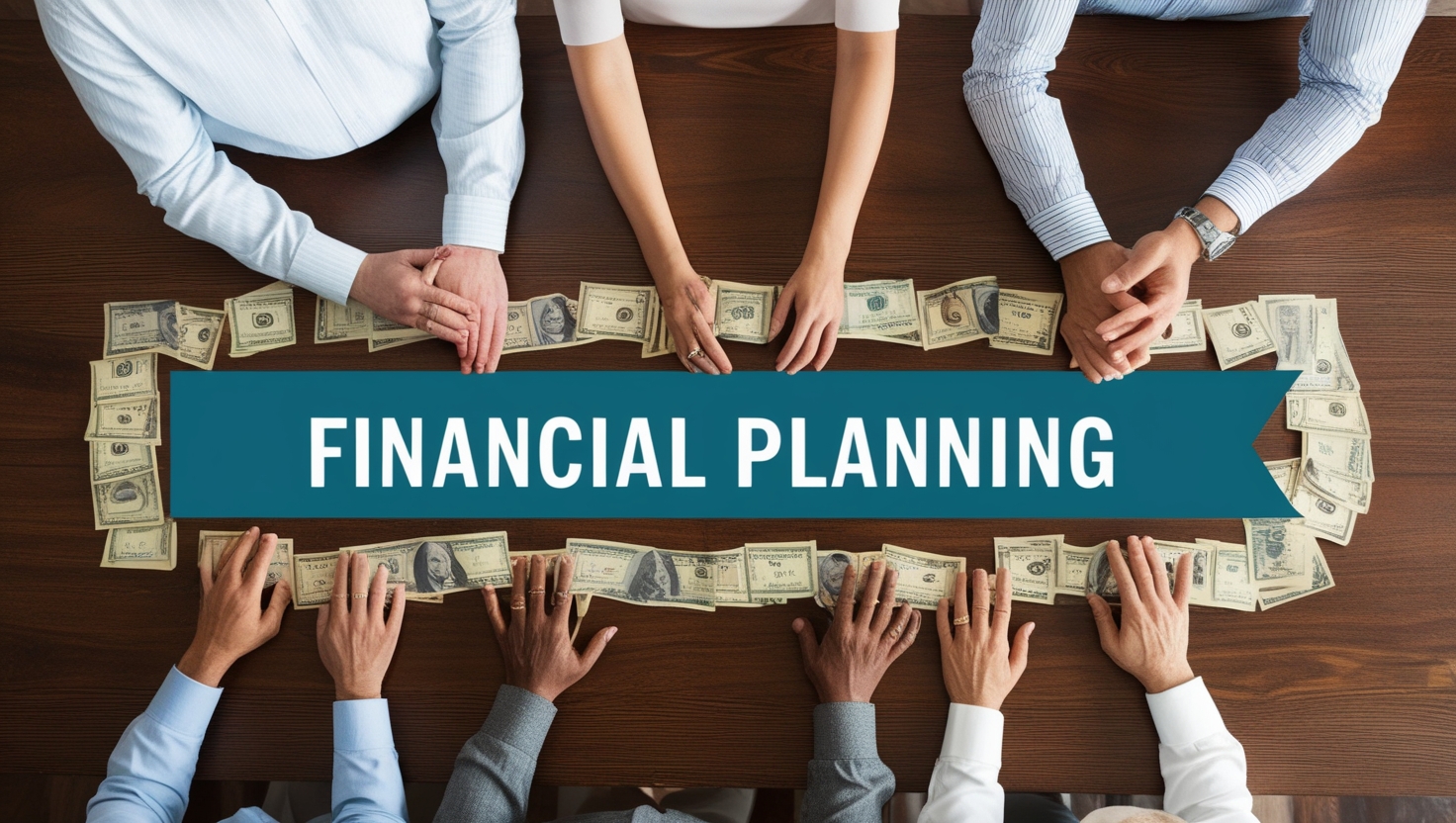Introduction: Why Your Family Needs an Emergency Fund
Life is full of surprises, and many of them come with unexpected costs. Whether it's a job loss, a medical emergency, or a necessary home repair, having an emergency fund can provide a vital safety net for your family. This article will detail how to create and manage an effective family emergency fund, focusing on practical aspects and actionable tips.
Chapter 1: Determining the Right Size for Your Family's Emergency Fund
There's no magic number that fits everyone when it comes to the size of an emergency fund. The ideal amount depends on several factors, including:
- Monthly Expenses: Start by calculating your family's total essential monthly expenses (rent/mortgage, food, utilities, transportation, insurance, etc.).
- Income Source: If you have a single income source, it's advisable to have a larger emergency fund.
- Insurance Coverage: Assess your insurance coverage. Does it cover most medical emergencies? Do you have unemployment insurance?
- Debt: If you have significant debt, you might want to build a smaller emergency fund temporarily to pay off high-interest debt, then focus on building the emergency fund later.
General Rule: Aim to save 3 to 6 months' worth of essential living expenses. For self-employed individuals or those with unstable jobs, it may be better to save up to 9 months or more.
Practical Example: If your essential monthly expenses are $2,500, you'll need an emergency fund of between $7,500 and $15,000.
Chapter 2: Setting Realistic Goals and Creating a Savings Plan
Once you've determined your target emergency fund size, start creating a realistic savings plan. Here are some steps you can take:
- Track Your Expenses: Use an app or spreadsheet to track where your money is going. This will help you identify areas where you can cut back spending.
- Create a Budget: Create a monthly budget that outlines how much money you'll spend on each category.
- Determine a Monthly Savings Amount: Set a realistic amount you can save each month. Even small amounts can accumulate over time.
- Automate: Set up an automatic transfer from your checking account to your emergency fund account each month. This ensures you're saving consistently.
Practical Tip: Start small and increase the amount gradually. Even saving $100 a month can make a big difference.
Chapter 3: Choosing the Right Place to Keep Your Emergency Fund
Where you keep your emergency fund is very important. It should be:
- Easily Accessible: You should be able to access the funds quickly in case of an emergency.
- Safe: The funds should be safe from loss.
- Liquid: The funds should be readily available (i.e., not invested in illiquid assets).
Common Options:
- High-Yield Savings Account: Offers a higher interest rate than a regular savings account with easy access to funds.
- Money Market Account: Similar to a high-yield savings account, but may require a higher minimum balance.
- Short-Term Certificate of Deposit (CD): Offers higher interest rates than savings accounts, but restricts your access to the funds for a specific period. Make sure the term is short enough to meet emergency needs.
Avoid:
- Investing in Stocks or Bonds: These investments are volatile and may lose value when you need them most.
- Regular Checking Account: Usually offers little or no interest.
Chapter 4: Regularly Reassessing and Adjusting Your Emergency Fund
An emergency fund isn't something you set up once and forget about. You should reassess and adjust it regularly to ensure it still meets your needs. Here are some factors to consider:
- Changes in Expenses: Have your monthly expenses increased due to inflation or a change in lifestyle?
- Changes in Income: Has your income increased? You can add more to your emergency fund.
- Major Life Events: Did you have a baby? Did you buy a house? These events may require an increase in the size of your emergency fund.
Practical Tip: Review your emergency fund at least once a year, or whenever a major life change occurs.
Chapter 5: Handling Emergencies: When and How to Use Your Emergency Fund
It's important to understand when it's appropriate to use your emergency fund. Generally, it should only be used for unexpected and necessary expenses that you can't cover from your regular income.
Examples of Emergencies:
- Job loss
- Medical emergency
- Necessary home repairs (such as a leaking roof or a broken heating system)
- Necessary car repairs
Examples of What Is *Not* an Emergency:
- Vacation
- Buying a new TV
- Fancy dinner
Practical Tip: Before using your emergency fund, ask yourself: "Is this expense necessary? Can I postpone it or find a cheaper way to deal with it?"
Chapter 6: Rebuilding Your Emergency Fund After Using It
If you've had to use your emergency fund, it's important to rebuild it as quickly as possible. Here are some tips:
- Reduce Expenses: Look for ways to reduce your expenses temporarily so you can save more money.
- Increase Income: Look for ways to increase your income, such as working overtime or taking on freelance work.
- Return to Your Savings Plan: Once your finances stabilize, return to the savings plan you originally created.
Practical Tip: Don't get discouraged if it takes some time to rebuild your emergency fund. The important thing is that you're taking positive steps towards achieving your goal.
Chapter 7: Integrating Your Emergency Fund with Comprehensive Financial Planning
An emergency fund is an important part of comprehensive financial planning, but it's not everything. It should be part of a larger strategy that includes:
- Paying Off Debt: Focus on paying off high-interest debt.
- Investing: Start investing to achieve your long-term goals, such as retirement.
- Insurance: Make sure you have adequate insurance coverage to protect yourself and your family from risks.
- Retirement Planning: Start planning for retirement as early as possible.
Practical Tip: Consult a financial advisor for help creating a comprehensive financial plan that suits your needs.
Chapter 8: Common Mistakes to Avoid When Building an Emergency Fund
There are some common mistakes people make when building their emergency fund. Avoid these mistakes to ensure your success:
- Not Setting a Realistic Goal: Setting a goal that's too big or too small can discourage you.
- Not Tracking Expenses: If you don't know where your money is going, you won't be able to cut back spending and save money.
- Not Having a Budget: A budget helps you control your money and prioritize spending.
- Using the Emergency Fund for Unnecessary Purposes: This defeats the purpose of having an emergency fund.
- Not Rebuilding the Emergency Fund After Using It: This leaves you vulnerable in case of another emergency.
Chapter 9: The Role of Culture and Traditions in Managing a Family Emergency Fund in the Arab World
Culture and traditions significantly influence how Arab families manage their finances, including their emergency funds. For example, there might be a greater emphasis on supporting relatives in times of need, which could affect the size of the emergency fund required. The concept of "shame" might also prevent some from seeking financial assistance, making an emergency fund even more critical. Additionally, there may be a preference for traditional investments like gold and real estate, which may not be liquid enough to meet emergency needs. Arab families should consider these factors when building and managing their emergency fund.
Chapter 10: Useful Tools and Resources for Building and Managing an Emergency Fund
Fortunately, there are many tools and resources available to help you build and manage your emergency fund:
- Budgeting Apps: Apps like Mint and YNAB (You Need a Budget) help you track your expenses and create a budget.
- Savings Calculators: Use a savings calculator to estimate how long it will take you to reach your savings goal.
- Financial Websites: Websites like Investopedia and The Balance offer valuable information and advice on financial planning.
- Financial Advisors: A financial advisor can provide personalized advice and help you create a comprehensive financial plan.
- Books and Articles: Read books and articles on personal finance to enhance your knowledge.
Conclusion: Building a family emergency fund is an investment in your peace of mind and your financial future. Through careful planning and regular saving, you can protect your family from unexpected financial crises and achieve long-term financial stability.




